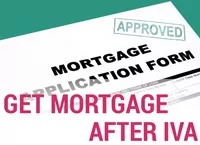Although interest rates in the UK have recently fallen to their lowest level for years you may be finding that maintaining your mortgage payments is increasingly difficult. This could be the case if your income has reduced because your have lost your job or had to accept reduced working hours. In these circumstances you may be able to agree a plan with your mortgage lender to reduce your mortgage payments. However if this is not possible and you cannot afford to remain in your property we explain how you can hand back your home to the mortgage company using voluntary repossession.
Should you try to sell your property?
Before you decide to allow your property to be repossessed one option is to try and sell it yourself. You may then be able to repay the outstanding mortgage in full and move on debt free. However in the current housing market this may not be possible.
During 2008 and so far in 2009 the housing market has been very slow. As a result it can take a very long time to sell a house. If you cannot make the mortgage payments in the mean time you may risk forced repossession anyway.
In addition if the price of your property has fallen and you are now in a position of negative equity where the value of the home is less than the mortgage you owe, selling may be impossible. In this situation the best option may be to simply hand back the property to the mortgage company on your own terms. This process is known as Voluntary Repossession.
How to carry out Voluntary Repossession
If you have decided to allow your home to be voluntarily repossessed the first thing you will need to do is arrange alternative accommodation. This will normally be a rented property. You need to consider your budget and how much rent you can afford to pay. Once you have arranged a rental property you can then set you own date for moving out of your mortgaged house into the new accommodation.
Once you have moved out of your property you need to contact your mortgage lender to inform them that you wish them to repossess. You should inform them that you will not longer be in a position to pay the mortgage and that they should start their procedure to procure the sale of the property.
BMD Tip: It is useful to ask the lender for a Voluntary Surrender Form which you sign and return. By signing this document, you are confirming that you have agreed to voluntarily leave your house and allow the lender to repossess it. It is therefore likely to speed up the repossession process. You should not sign a Deed of Acknowledgement. If in doubt do not sign anything without getting advice.
Dealing with a mortgage shortfall after Voluntary Repossession
After your property has been repossessed the mortgage lender will normally sell the property. If they do not make enough from the sale to cover the money you owe on your mortgage the outstanding amount is called a mortgage shortfall. You remain liable for this debt.
If a mortgage shortfall exists you will need to make arrangements to repay this. However, it is clear that if you were not in a position to maintain your mortgage repayments, it is likely that you will also struggle to repay a mortgage shortfall debt.
The key point here is that any mortgage shortfall automatically becomes an unsecured debt as there is no longer any property to secure it against. As such, this debt (and any other unsecured debts you have) can then be resolved using a debt management solution. If you chose an Individual Voluntary Arrangement or Bankruptcy it is likely that a considerable amount of the debt you still owe will be written off.
Arrange a call with a Debt Management Expert
Privacy Policy
Your information will be held in strictest confidence and used to contact you by our internal team only. We will never share your details with any third party without your permission.


Hi how many failed mortgage payments do I need before I can fill out a voluntary surrender form?
Hi Benn
As far as I am aware, there is no prescribed number of missed payments required before you can initiate the property repossession process.
If you have decided that you can no longer pay for your property then you should speak to the lender straight away. It will then be up to them to decide how many payments have to be missed before voluntary repossession can commence.